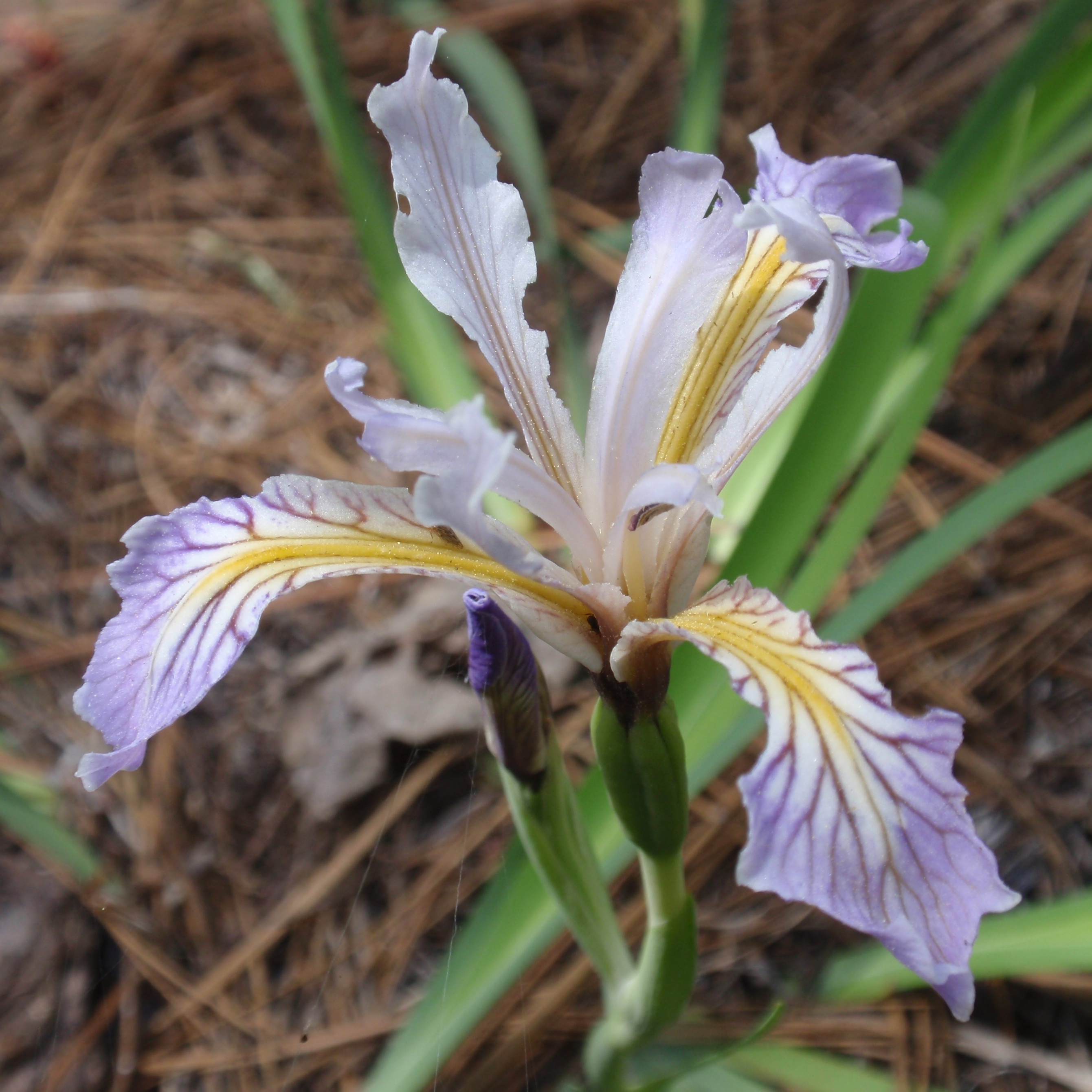Starting a series within a series, I will be highlighting shade plants that grow well underneath trees, especially California Live Oak. I have a deep shade area beneath many trees here in my own garden and i am constantly looking for plants that can help green this area. — Douglas
Sierra Iris (Iris hartwegii)
While this would be lovely in the garden, I think here in Southern California you would be a pond or a march garden in order to provide enough moisture. Most iris are water loving plants that only really thrive in conditions that are almost constantly moist.
By Tom Hilton – originally uploaded to Flickr as Hartweg’s Iris 02, CC BY 2.0, Link
What are your thoughts on this Interesting Plant? Drop a note in the comments!
The Sierra Iris is a creamy, butter- yellow color with darker yellow along the center of the petals and on the inner portion of the petals. Flowers can sometimes be purple! It spreads slowly through underground rhizomes forming an attractive green clump of shiny green leaves. The Sierra Iris is native to the Sierra Nevada range, from 2000-6000 foot. It can be found growing in heavy moist shade, in thick duff under firs and pines, and in sunny, moist meadow areas. Sierra Iris goes deciduous during the winter. Sierra Iris grows best in higher elevation gardens, where it can go dormant in the colder winters and grow through cooler summers.
More information on Sierra Iris (Iris hartwegii):
- Sierra Iris (Iris hartwegii) in Wikipedia
- Sierra Iris (Iris hartwegii) at Las Pilitas Nursery
- Sierra Iris (Iris hartwegii) at Society for Pacific Coast Native Iris



- Siskiyou Alum Root (Heuchera merriamii)
- Island Alum Root (Heuchera maxima)
- Wood Strawberry/California strawberry (Fragaria californica)
- Sticky Monkey Flower (Mimulus aurantiacus/Diplacus aurantiacus)
- Red Stem Dogwood (Cornus stolonifera/Cornus sericea)
- Blackfruit Dogwood (Cornus sessilis)
- California Spikenard and Elk Clover (Aralia californica)
- Bush Anemone (Carpenteria californica)
- California Pipevine/California Dutchman’s Pipe (Aristolochia californica)
- Wild Ginger (Asarum caudatum)
- Begonia Rex (Painted-leaf begonia)
- Leonotis leonurus
- Matilija Poppy (Romneya)
- Melocactus matanzanus (Turk’s Cap Cactus)
- Coleus “Redhead”
- Tiarella ‘Pink Skyrocket’
- Bacopa monnieri (Water hyssop)
- Lycoris squamigera (Naked Lady Lily)
- Kong Coleus (Plectranthus/Solenostemon scutellarioides “Kong Series”)
- Crassula plegmatoides
- Agave victoriae-reginae
- Mountain Cornflower (Centaurea montana)
- Euphorbia ‘Black Bird’
- Firecracker vine (Ipomoea lobata)
- Eryngium yuccifolium
- Dahlia ‘Karma Choc’
- Echeveria Agavoides
- Jerusalem Sage (Phlomis fruticosa)
- Hummingbird Sage (Salvia spathacea)
- Seaside Daisy, Beach Aster (Erigeron glaucus)
- Toyon (Heteromeles arbutifolia)
- California Lilac (Ceanothus)
- Bigberry Manzanita (Arctostaphylos glauca)
- Douglas Iris (Iris douglasiana)
- Malva Rosa (Lavatera assurgentiflora)
- Baby Blue-Eyes (Nemophila)
- Coral Bells or Alum Root (Heuchera)
- Deer Grass (Muhlenbergia rigens)
- Echeveria ‘Lola’
- View all past “Interesting Plant” posts
Interesting Plant is a series from A Gardener’s Notebook blog and podcast that highlights the most interesting plants I find in my Internet and real-world travels — Douglas
The Sierra Iris is a creamy, butter- yellow color with darker yellow along the center of the petals and on the inner portion of the petals. Flowers can sometimes be purple! It spreads slowly through underground rhizomes forming an attractive green clump of shiny green leaves. The Sierra Iris is native to the Sierra Nevada range, from 2000-6000 foot. It can be found growing in heavy moist shade, in thick duff under firs and pines, and in sunny, moist meadow areas. Sierra Iris goes deciduous during the winter. Sierra Iris grows best in higher elevation gardens, where it can go dormant in the colder winters and grow through cooler summers.



